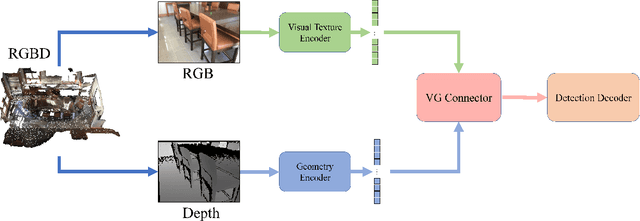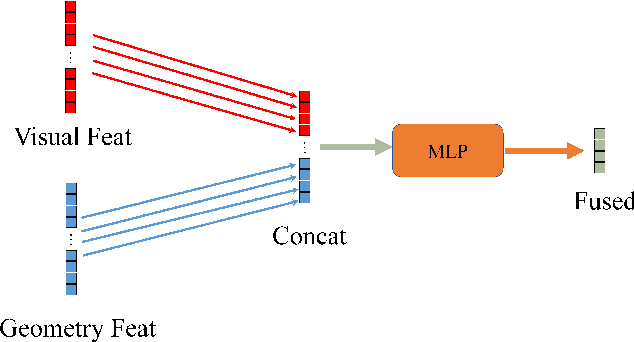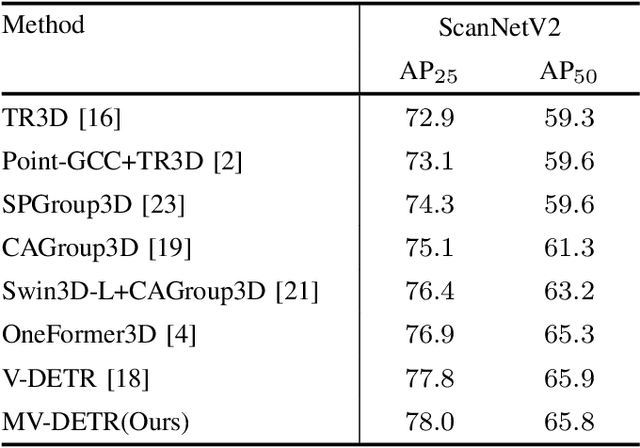Yilin Zhang
Sid
Gradient Rectification for Robust Calibration under Distribution Shift
Aug 27, 2025Abstract:Deep neural networks often produce overconfident predictions, undermining their reliability in safety-critical applications. This miscalibration is further exacerbated under distribution shift, where test data deviates from the training distribution due to environmental or acquisition changes. While existing approaches improve calibration through training-time regularization or post-hoc adjustment, their reliance on access to or simulation of target domains limits their practicality in real-world scenarios. In this paper, we propose a novel calibration framework that operates without access to target domain information. From a frequency-domain perspective, we identify that distribution shifts often distort high-frequency visual cues exploited by deep models, and introduce a low-frequency filtering strategy to encourage reliance on domain-invariant features. However, such information loss may degrade In-Distribution (ID) calibration performance. Therefore, we further propose a gradient-based rectification mechanism that enforces ID calibration as a hard constraint during optimization. Experiments on synthetic and real-world shifted datasets, including CIFAR-10/100-C and WILDS, demonstrate that our method significantly improves calibration under distribution shift while maintaining strong in-distribution performance.
NTIRE 2025 Image Shadow Removal Challenge Report
Jun 18, 2025Abstract:This work examines the findings of the NTIRE 2025 Shadow Removal Challenge. A total of 306 participants have registered, with 17 teams successfully submitting their solutions during the final evaluation phase. Following the last two editions, this challenge had two evaluation tracks: one focusing on reconstruction fidelity and the other on visual perception through a user study. Both tracks were evaluated with images from the WSRD+ dataset, simulating interactions between self- and cast-shadows with a large number of diverse objects, textures, and materials.
Unleashing High-Quality Image Generation in Diffusion Sampling Using Second-Order Levenberg-Marquardt-Langevin
May 30, 2025Abstract:The diffusion models (DMs) have demonstrated the remarkable capability of generating images via learning the noised score function of data distribution. Current DM sampling techniques typically rely on first-order Langevin dynamics at each noise level, with efforts concentrated on refining inter-level denoising strategies. While leveraging additional second-order Hessian geometry to enhance the sampling quality of Langevin is a common practice in Markov chain Monte Carlo (MCMC), the naive attempts to utilize Hessian geometry in high-dimensional DMs lead to quadratic-complexity computational costs, rendering them non-scalable. In this work, we introduce a novel Levenberg-Marquardt-Langevin (LML) method that approximates the diffusion Hessian geometry in a training-free manner, drawing inspiration from the celebrated Levenberg-Marquardt optimization algorithm. Our approach introduces two key innovations: (1) A low-rank approximation of the diffusion Hessian, leveraging the DMs' inherent structure and circumventing explicit quadratic-complexity computations; (2) A damping mechanism to stabilize the approximated Hessian. This LML approximated Hessian geometry enables the diffusion sampling to execute more accurate steps and improve the image generation quality. We further conduct a theoretical analysis to substantiate the approximation error bound of low-rank approximation and the convergence property of the damping mechanism. Extensive experiments across multiple pretrained DMs validate that the LML method significantly improves image generation quality, with negligible computational overhead.
RankLLM: A Python Package for Reranking with LLMs
May 25, 2025Abstract:The adoption of large language models (LLMs) as rerankers in multi-stage retrieval systems has gained significant traction in academia and industry. These models refine a candidate list of retrieved documents, often through carefully designed prompts, and are typically used in applications built on retrieval-augmented generation (RAG). This paper introduces RankLLM, an open-source Python package for reranking that is modular, highly configurable, and supports both proprietary and open-source LLMs in customized reranking workflows. To improve usability, RankLLM features optional integration with Pyserini for retrieval and provides integrated evaluation for multi-stage pipelines. Additionally, RankLLM includes a module for detailed analysis of input prompts and LLM responses, addressing reliability concerns with LLM APIs and non-deterministic behavior in Mixture-of-Experts (MoE) models. This paper presents the architecture of RankLLM, along with a detailed step-by-step guide and sample code. We reproduce results from RankGPT, LRL, RankVicuna, RankZephyr, and other recent models. RankLLM integrates with common inference frameworks and a wide range of LLMs. This compatibility allows for quick reproduction of reported results, helping to speed up both research and real-world applications. The complete repository is available at rankllm.ai, and the package can be installed via PyPI.
The Tenth NTIRE 2025 Efficient Super-Resolution Challenge Report
Apr 14, 2025Abstract:This paper presents a comprehensive review of the NTIRE 2025 Challenge on Single-Image Efficient Super-Resolution (ESR). The challenge aimed to advance the development of deep models that optimize key computational metrics, i.e., runtime, parameters, and FLOPs, while achieving a PSNR of at least 26.90 dB on the $\operatorname{DIV2K\_LSDIR\_valid}$ dataset and 26.99 dB on the $\operatorname{DIV2K\_LSDIR\_test}$ dataset. A robust participation saw \textbf{244} registered entrants, with \textbf{43} teams submitting valid entries. This report meticulously analyzes these methods and results, emphasizing groundbreaking advancements in state-of-the-art single-image ESR techniques. The analysis highlights innovative approaches and establishes benchmarks for future research in the field.
Efficient Many-Shot In-Context Learning with Dynamic Block-Sparse Attention
Mar 11, 2025Abstract:Many-shot in-context learning has recently shown promise as an alternative to finetuning, with the major advantage that the same model can be served for multiple tasks. However, this shifts the computational burden from training-time to inference-time, making deployment of many-shot ICL challenging to justify in-practice. This cost is further increased if a custom demonstration set is retrieved for each inference example. We present Dynamic Block-Sparse Attention, a training-free framework for retrieval-based many-shot in-context learning. By combining carefully designed block-sparse attention and retrieval of cached groups of demonstrations, we achieve comparable per-example latency to finetuning while maintaining on average >95% of the best method's accuracy across strong ICL and finetuning baselines. We hope that this will further enable the deployment of many-shot ICL at scale.
UIFormer: A Unified Transformer-based Framework for Incremental Few-Shot Object Detection and Instance Segmentation
Nov 13, 2024



Abstract:This paper introduces a novel framework for unified incremental few-shot object detection (iFSOD) and instance segmentation (iFSIS) using the Transformer architecture. Our goal is to create an optimal solution for situations where only a few examples of novel object classes are available, with no access to training data for base or old classes, while maintaining high performance across both base and novel classes. To achieve this, We extend Mask-DINO into a two-stage incremental learning framework. Stage 1 focuses on optimizing the model using the base dataset, while Stage 2 involves fine-tuning the model on novel classes. Besides, we incorporate a classifier selection strategy that assigns appropriate classifiers to the encoder and decoder according to their distinct functions. Empirical evidence indicates that this approach effectively mitigates the over-fitting on novel classes learning. Furthermore, we implement knowledge distillation to prevent catastrophic forgetting of base classes. Comprehensive evaluations on the COCO and LVIS datasets for both iFSIS and iFSOD tasks demonstrate that our method significantly outperforms state-of-the-art approaches.
Seed-Music: A Unified Framework for High Quality and Controlled Music Generation
Sep 13, 2024



Abstract:We introduce Seed-Music, a suite of music generation systems capable of producing high-quality music with fine-grained style control. Our unified framework leverages both auto-regressive language modeling and diffusion approaches to support two key music creation workflows: \textit{controlled music generation} and \textit{post-production editing}. For controlled music generation, our system enables vocal music generation with performance controls from multi-modal inputs, including style descriptions, audio references, musical scores, and voice prompts. For post-production editing, it offers interactive tools for editing lyrics and vocal melodies directly in the generated audio. We encourage readers to listen to demo audio examples at https://team.doubao.com/seed-music .
Effect of Adaptation Rate and Cost Display in a Human-AI Interaction Game
Aug 26, 2024



Abstract:As interactions between humans and AI become more prevalent, it is critical to have better predictors of human behavior in these interactions. We investigated how changes in the AI's adaptive algorithm impact behavior predictions in two-player continuous games. In our experiments, the AI adapted its actions using a gradient descent algorithm under different adaptation rates while human participants were provided cost feedback. The cost feedback was provided by one of two types of visual displays: (a) cost at the current joint action vector, or (b) cost in a local neighborhood of the current joint action vector. Our results demonstrate that AI adaptation rate can significantly affect human behavior, having the ability to shift the outcome between two game theoretic equilibrium. We observed that slow adaptation rates shift the outcome towards the Nash equilibrium, while fast rates shift the outcome towards the human-led Stackelberg equilibrium. The addition of localized cost information had the effect of shifting outcomes towards Nash, compared to the outcomes from cost information at only the current joint action vector. Future work will investigate other effects that influence the convergence of gradient descent games.
MV-DETR: Multi-modality indoor object detection by Multi-View DEtecton TRansformers
Aug 13, 2024


Abstract:We introduce a novel MV-DETR pipeline which is effective while efficient transformer based detection method. Given input RGBD data, we notice that there are super strong pretraining weights for RGB data while less effective works for depth related data. First and foremost , we argue that geometry and texture cues are both of vital importance while could be encoded separately. Secondly, we find that visual texture feature is relatively hard to extract compared with geometry feature in 3d space. Unfortunately, single RGBD dataset with thousands of data is not enough for training an discriminating filter for visual texture feature extraction. Last but certainly not the least, we designed a lightweight VG module consists of a visual textual encoder, a geometry encoder and a VG connector. Compared with previous state of the art works like V-DETR, gains from pretrained visual encoder could be seen. Extensive experiments on ScanNetV2 dataset shows the effectiveness of our method. It is worth mentioned that our method achieve 78\% AP which create new state of the art on ScanNetv2 benchmark.
 Add to Chrome
Add to Chrome Add to Firefox
Add to Firefox Add to Edge
Add to Edge